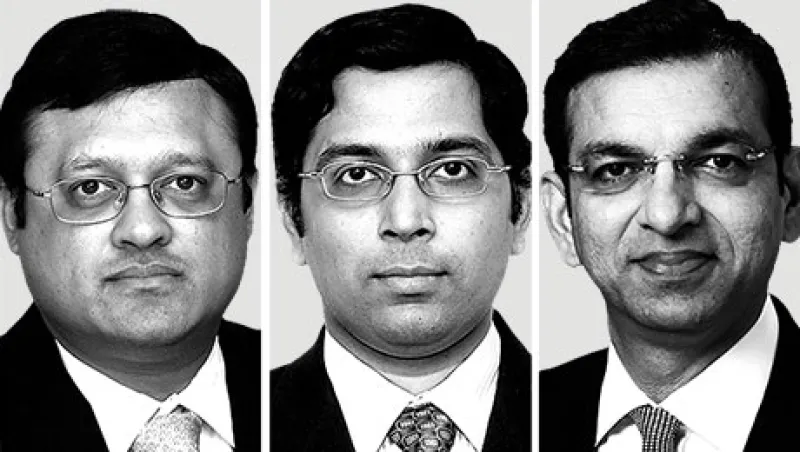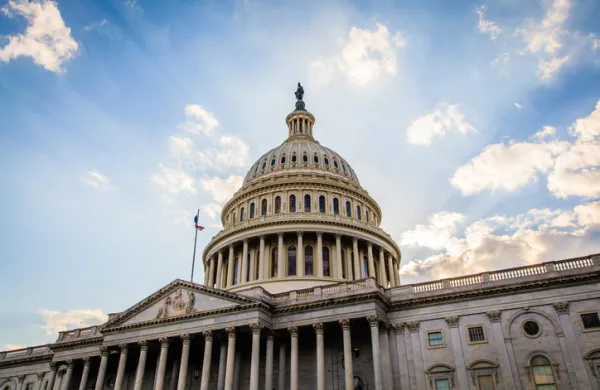Kotak Securities, one of India’s largest and oldest brokerages, leaps two rungs to finish in first place for the first time on the All-India Research Team, Institutional Investor’s exclusive annual ranking of the nation’s best sell-side equity analysts. The firm captures 11 total team positions in the 16-sector survey, two more than in 2014.
Credit Suisse bounds from fifth place to second in its strongest showing since this ranking was introduced, in 2011. The Swiss bank also increases its team total by two, to nine.
The year’s biggest upward mover — by far — is Macquarie Capital Securities, which more than doubles its number of positions, from three to seven, and rockets from No. 12 to share third place with last year’s winner, Morgan Stanley. The latter firm’s total falls by four.
However, when a rating of four is assigned to each first-place position, three to each second-place position and so on, the running order changes significantly. Credit Suisse comes in first in the weighted results, with a score of 28 to Kotak’s 26. Morgan Stanley holds steady at No. 3, with 16. In fourth place, with a score of 12, is Deutsche Bank, which ties for eighth place (with Bank of America Merrill Lynch and Nomura) in the unweighted results, with four positions. Macquarie, with a weighted score of 11, shares the fifth tier with Nomura. Click on the Leaders link in the navigation table at right to view the full list of 22 ranked firms, or Weighting the Results to see how these research providers fare when the abovementioned formula is applied.
This year’s team features 71 analysts, including 15 people appearing for the first time. To view the individuals in first place in each sector, click here or select the appropriate link in the navigation table for more information. The Overview highlights some of the more noteworthy results of this year’s survey.
The 2015 All-India Research Team reflects the opinions of more than 250 buy-side analysts and money managers at nearly 150 institutions that collectively manage an estimated $120 billion in Indian equity assets.
In May 2014, when probusiness Narendra Modi assumed office as prime minister, investors around the world cheered, pouring money into Indian equities at a record pace and sending the benchmark S&P Bombay Stock Exchange Sensitive Index, or Sensex, soaring roughly 30 percent for the year. Stock prices kept climbing in early 2015, with the index crossing 30,000 for the first time in March after the Reserve Bank of India surprised the market by cutting the repurchase rate by 25 basis points, to 7.5 percent.
The euphoria quickly faded, however. By late October the index had fallen nearly 10 percent, to 26,657, even though the nation’s real gross domestic product growth remains robust. That same month the World Bank affirmed its forecast of a 7.5 percent expansion for the current fiscal year (which runs through March) and predicted the economy would grow by 7.8 percent in fiscal 2016.
Why, then, aren’t investors more upbeat?
“The Indian market’s valuations are correcting to its more normal range of 13 to 17 times 12-month forward multiples after trading at very high multiples — 18 to 20 times — following the formation of the new government and related high expectations of economic reforms,” explains Sanjeev Prasad, Kotak’s co-head of institutional equities in Mumbai. “The government has implemented certain reforms, and India’s macroeconomic position has improved significantly, but these have yet to translate into any sustained economic recovery and earnings upgrades. In fact, we continue to see earnings downgrades on weak underlying economic trends in both consumption and investment.”
Market participants, he adds, may have anticipated too much too soon, and the current downturn could be a reflection of their disappointment. Moreover, “the correction in global commodities prices has resulted in significant earnings cuts in the metals and oil and gas sectors, which account for a meaningful portion of the market’s earnings,” he notes.
Morgan Stanley’s Chetan Ahya, who extends his winning streak in Economics to a fifth year and is one of only two individuals to have turned in a sector-topping performance every year since the All-India Research Team was introduced (Deutsche Bank consumer analyst Manoj Menon is the other), believes that the problems plaguing India are not internal, for the most part.
“Global factors are largely responsible for the weak absolute performance of the equity markets,” he says. “The weak external environment remains a drag in the current cycle. This is being reflected in weak export growth and resultant low capacity utilization.”
Indian exports have fallen sharply every month this year. In September, for example, the value of merchandise shipped abroad plunged more than 24 percent year over year, to $21.8 billion, according to the Ministry of Commerce and Industry.
“Another aspect of weaker global and regional growth is the persistent disinflationary trend in tradable goods,” the Hong Kong–based economist adds. “This trend in the wholesale price index is hurting revenue growth in the industrial corporate sector and weighing on nominal GDP growth. Indeed, this weak external environment has adversely impacted private business confidence and has been holding back the pace of recovery in private capital expenditures.”
Neelkanth Mishra, who rises one rung to finish on top for the first time in Portfolio Strategy (and also celebrates his first appearance in the winner’s circle in Basic Materials), shares a similar view. Nearly half the revenues of the Nifty 50, companies in the National Stock Exchange of India’s benchmark index, “are not in rupees — they’re either exporters or have revenues affected by global pricing, such as oil and metals producers, refiners and petrochemicals manufacturers,” the Credit Suisse strategist observes. “Even the other half is exposed to global trends. Banks are a large part of the Nifty, and many have significant exposure to companies affected by the global downturn in commodities prices.”
That doesn’t mean that the current decline in equities presents a buying opportunity. “The price-earnings premium to global equities is still in the 10 to 15 percent range, versus being meaningfully higher in 2007 and in 2010, when optimism about India was a lot lower than it is now,” reports Mishra, who is based in Mumbai. “We don’t expect companies with global linkages — particularly commodities producers and those with exposure to such companies — to do well. Their stocks are best avoided despite cheap valuations.”
Kotak’s Prasad also urges caution. “The market is trading at fair valuations, at 15.5 times fiscal 2017 estimated earnings per share, but there are very few bottom-up ideas,” he says. “The good-quality growth stocks such as private banks, consumer staples and pharmaceuticals are still trading at expensive valuations.” Many companies in the latter two sectors have fallen short of market forecasts insofar as earnings are concerned, he adds, while private banks continue to face challenges with regard to nonperforming loans.
Mishra is likewise advising clients to be selective. He believes that private banks with limited corporate debt liabilities and nonbanking financial companies will outperform the broad market in the year ahead. He is also bullish on the information technology and utilities sectors. Industries to avoid, he says, include industrials and telecommunications.
Although structural reforms implemented by the Modi administration have already had a positive impact, more needs to be done, according to Ahya. “In order to sustain growth at 7 to 8 percent in the medium term, the government will need to focus on addressing issues related to land, labor, tax, the policy regime related to infrastructure and overall ease of doing business,” the Morgan Stanley economist contends. “Some policy actions have been forthcoming in these areas, as seen by steps taken to improve the ease of doing business, some steps taken for labor reforms at the central and state levels, and steps taken to ease the land acquisition process. However, the government will need to make more concerted efforts to ensure a holistic approach is adopted to addressing these issues.”






